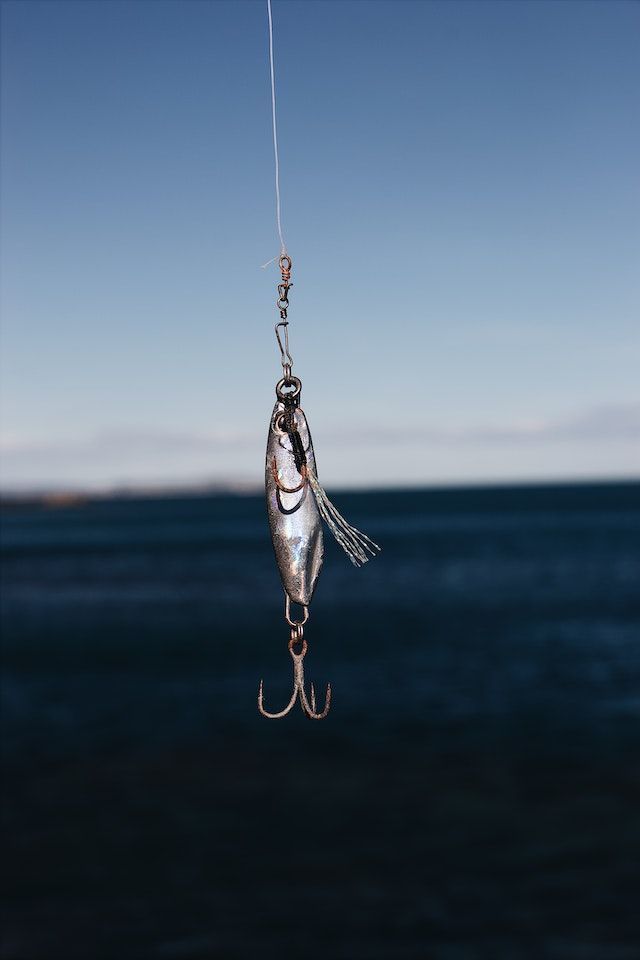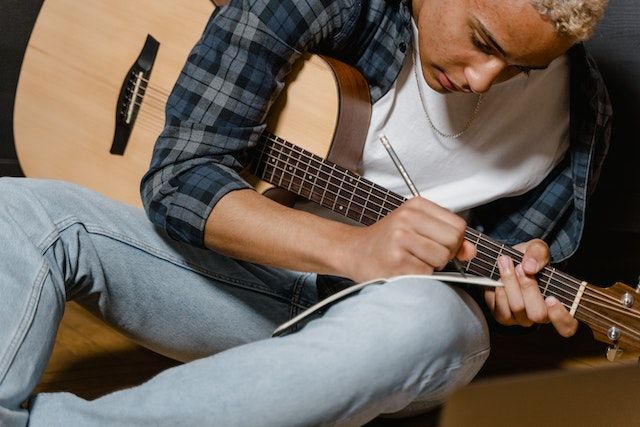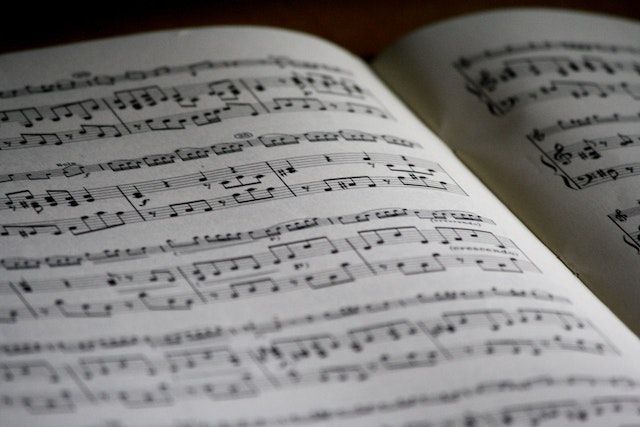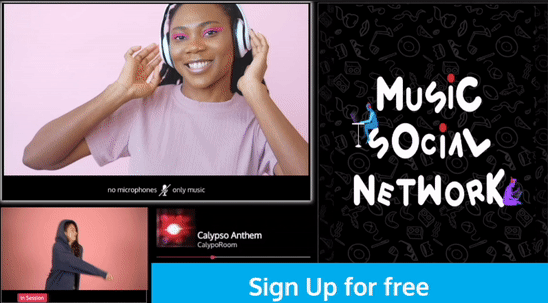What is a hook in a song? Definition and how to write an effective one
Understanding how to write a captivating hook is one of the most crucial aspects of songwriting. There are many methods for writing a song's hook, but three essential components that every songwriter should keep in mind are a compelling rhythm, melody, and phrasing.
In this blog post, we'll explain what a song's hook actually is how to use one in your own compositions. Let's get started!
What Is a Song's Hook?
A song's "hook" is a brief line or phrase that tries to stick in the listener's mind after hearing it. A compelling melody, rhythm, or poetic phrase are some of the ways a great hook achieves this.

Even if a song merely uses a straightforward melody, a hook helps it stand out from the crowd. A hook is typically repeated several times during the entire song, and it is frequently used as a crucial component of the chorus's lyric portion. All memorable songs share one thing in common: they all have strong hooks.
Writing a hook is a skill that is used in modern music of all genres, from rap songs to mainstream music and everything in between. One of the most crucial abilities you'll want to have if you want to grow in the music industry is the ability to come up with memorable yet concise musical ideas.
What’s the difference between a hook and a chorus?
It can be difficult to distinguish between a chorus and a hook. Depending on the composition, the chorus and the hook may be the same thing. Though not all hooks must be found in a song's chorus, a hook is typically a shorter, more memorable portion of a chorus.
Any stanza that appears repeatedly during a song and typically has several lines is referred to as the chorus. When it comes to the chorus, most people think about the lyrics or the melodic passages.
A hook, on the other hand, is only a short phrase that might appear anywhere in the song.
To further support their liveliness, hooks are occasionally accompanied by a powerful musical melody. In songs whose main goal is to create tension around a certain idea or subject, a hook can also be the resolution or a source of solace. The ability of a strong hook to stand out from the rest of the music is obvious.
Kind of hooks you can find in music
Intro hook
A musical concept introduced at a song's start is known as the “intro” hook. Then, dropping in and out, it repeats throughout the song. Getting the listener's attention is the goal here. The song becomes quickly recognizable thanks to the strong beginning hook.
The first thing the listener hears will be present throughout the entire song. To capture listeners' attention right away, make sure your entrance hook begins with a bang. Its central notion could not excite them if they are not quickly drawn in.
One of the most famous intro hooks ever created is the amazing bass hook from Queen's song "Under Pressure." The flawless vocals of Freddie Mercury and David Bowie are soon placed on top of the opening hook's electric guitar riffs, a few piano chords, and other musical elements.
Rhythm hook
The beat and rhythm are established via the rhythmic hook. Your attention is frequently caught by a fast four-or eight-beat rhythm. Your rhythmic concept can also be musical or poetic.
A rhythm hook is made up of several components, such as a catchy beat, a chord sequence, and a bassline. "Savage" by Megan Thee Stallion, which includes a part titled "I'm a Savage," is a fantastic example.
Background instrumental hook
Short melodic phrases that may not be a part of the vocal melody are known as instrumental hooks in music. Around the lyrics is sometimes a recognized two- or four-beat motif.
Consider the instrumental hook as the chorus's lyric response. A natural opening for a quick instrumental concept will exist in the chorus or verse. The song then incorporates that concept repeatedly.
“Ghostbusters” by Ray Parker Jr. is a great example. Electric guitar, synthesizer, and saxophone/brass all contribute to the song's major instrumental hook at various points. Additionally, each chorus ends with a guitar/synth breakdown and a rather memorable vocal melody.
Lyrical hook
Rap music frequently uses lyrical hooks, but not always. They can even be sung or rapped in hip-hop and rap, like in Drake's "Started from the Bottom", which combines the two. This song's message is conveyed in the hook. You can therefore recall the concept and purpose. When this occurs, it is likely that the hook was written first and the verses were added later.
How to write a perfect hook for your next song
It's crucial to incorporate hooks into your music. Without them, listeners won't have anything to latch onto, and your song might not stick in their minds. Your hook should be straightforward and memorable. You want your audience to sing along with a catchy song and remember the lyrics.
A listener will find it difficult to remember long, complicated hooks. Because of this, popular music hooks consist of a single line or a pair of lines that last for four to eight bars.
Usually, the chorus, pre-chorus, intro, or verse contains the hook. But you can put your hook anywhere you choose. Just be sure to repeat it during the song at least once. The hook stands out thanks to repetition!
Consider the song's structure when composing the hook. What is the actual topic? What is the purpose of this song? Give your responses to those questions and synthesize them into a single thought that lasts up to eight bars.
Be creative with your lyrics
A song's lyrics are just as crucial as its melodic hook. The lyrics of the hook can evoke a feeling, grab your attention, and reinforce the main theme of your story.
Use lyrics in music that listeners may relate to or that evoke emotions; Use clear, simple language; Try to come up with some original phrases for the hook. Your hook will be effective if you follow these suggestions.
Consider adding the song's title to the hook while drafting the lyrics. Utilizing the title of your song in the hook makes it easier for listeners to find and recall your music.

Be creative with the rhythm
Next, pay attention to the hook's underlying beat pattern. You want the rhythm of the hook to be straightforward, much like the lyrics. Additionally, you want it to maintain its uniqueness.
Verse, hook, and chorus rhythms are often changed by music producers. This approach is a simple and efficient strategy to hold the listener's interest and advance the music.
Simplify the beating by stripping it down; Alter the pitch of certain drum strikes; Use a new note pattern or fewer notes; Replace the drum samples with new ones. These are some suggestions for creating a catchy beat.
Don't go crazy! Finding the right ratio of novelty to memorable is important. It will be more difficult to remember the beat if it is too complex.
Be creative with the melody
Melody is the final component to pay attention to. Listeners will start whistling or humming along to your song if it has a memorable melodic hook.

However, a hook doesn't necessarily need a melody. Don't feel tempted to include a melody if the hook is strong enough to hold listeners' attention without it. If a melody appears appropriate, use the hook's rhythm as a guide. Let the lyrics and the melody flow together. The two components will naturally enhance one another.
Keep your melody straightforward and easy. Two to four notes separated by a semitone or whole tone typically make up melodic hooks. Rarely do notes have large intervals between them. It is simple to sing along with and retain the melody when the note patterns are kept to a minimum.
Conclusion
It takes a lot of work and talent to write a memorable song; it's not an easy task.
Start trying and training your ears to hear details in your songs that can serve as an effective hook. The goal of modern culture is to grab listeners' attention, and musical hooks serve this purpose.
We hope you enjoyed reading this post, and if you'd want more career-related guidance, on our blog section, there are many more beneficial articles, advice, and recommendations to be found.
You are undoubtedly here because you love music, so please take advantage of the chance to listen to it while interacting with other users via webcams in CalypsoRoom.
Are you a music artist or label and do you want to give your music a further dimension? Do you own or co-own the master and publishing rights to your music? Consider to post it on CalypsoRoom listening to it together with your super fans, at the same time, connected by webcams.
Thanks for reading,
CalypsoRoom Team
back
Written by CalypsoRoom Editorial Team
The CalypsoRoom Editorial Team is a skilled and diverse group of writers, researchers, and industry specialists who have access to Calypso's data and information in order to give you broad knowledge about the music industry as well as helpful advice to help you manage your music and dancing career.
Updated January 2023
Company number: 681223
James's Walk 31, Dublin, Ireland
contact@calypsoroom.com
+353 (89) 435 8928



